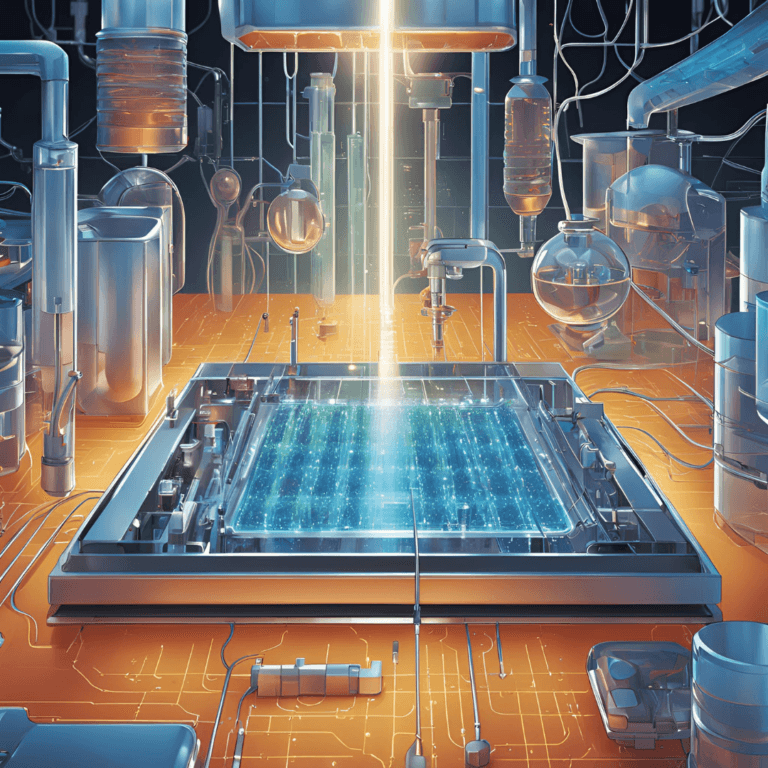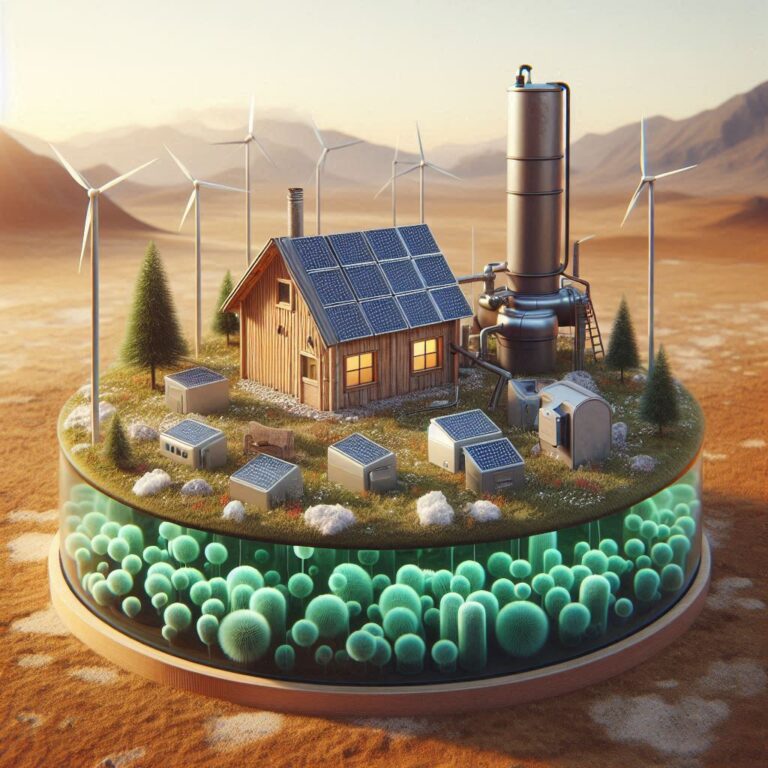
Introduction: The Invention of Refrigerator
Imagine a world where fresh fruits and vegetables vanish with the summer sun, where milk sours within hours, and meat becomes a luxury reserved for special occasions. This was the reality for most of human history, where food preservation remained a constant struggle. But from humble beginnings in ancient civilizations, a revolutionary invention emerged that would forever transform our relationship with food: the refrigerator.
This blog embarks on a captivating journey of the invention of refrigerator from its ingenious, yet primitive, origins to the sleek, feature-packed appliances gracing our kitchens today. We’ll delve into the minds of inventors, explore the fascinating science behind the cooling process, and history of refrigeration, and uncover the profound impact this single invention has had on societies and individuals across the globe. So, grab your metaphorical ice pack and prepare to be chilled by the remarkable story of refrigeration!
How Refrigerator Works
At the heart of every refrigerator lies a fundamental principle known as the vapor-compression cycle. Imagine a closed loop filled with a special liquid called a refrigerant.
Components of a Refrigerator:
Compressor:
The compressor is a very important part of the system. It’s a motorized pump that compresses a refrigerant gas, raising its temperature and pressure. This high-pressure gas is then released into the condenser.
Condenser Coil:
The condenser coil is located on the back or bottom of the refrigerator and acts as a heat exchanger. It dissipates the heat from the compressed refrigerant, causing it to condense and change from a gas to a liquid.
Expansion Valve:
After the refrigerant leaves the condenser, it passes through an expansion valve. This valve reduces the pressure and temperature of the refrigerant, causing it to expand rapidly.
Evaporator Coil:
Inside the refrigerator, the evaporator coil is located. It’s responsible for absorbing heat from the interior of the fridge, which causes the refrigerant to evaporate and change back into a low-pressure gas.
Thermostat:
Monitors the temperature inside the fridge and turns the compressor on and off as needed.
Interior Space:
The inside of the refrigerator contains shelves and compartments for storing food. These spaces are kept cool by the evaporator coil.
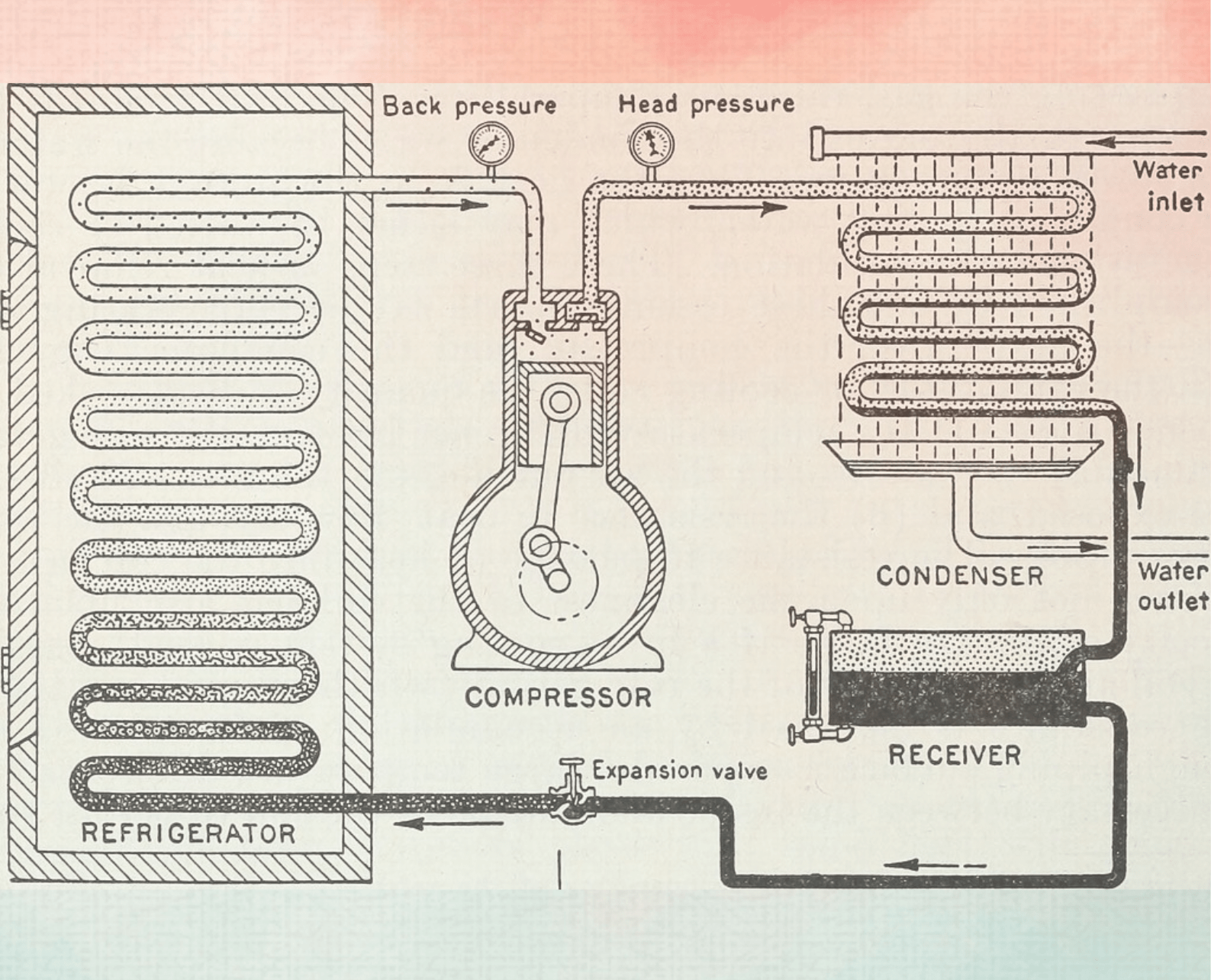
The Vapor Compression Refrigeration Cycle:
The VCRC Process Step-by-Step
Compression (Compressor):
Low-pressure, low-temperature refrigerant vapor enters the compressor where it is compressed. This process increases both the pressure and temperature of the refrigerant, transforming it into a superheated vapor.
Condensation (Condenser):
The hot, high-pressure vapor flows into the condenser. As it releases heat, the refrigerant changes its state from vapor to liquid. This heat is dissipated into the surrounding environment (air or water).
Expansion (Expansion Valve):
The high-pressure liquid refrigerant passes through the expansion valve, which creates a restriction and sudden pressure drop. This causes a portion of the liquid to flash evaporate, resulting in a mixture of cold, low-pressure liquid and vapor.
Evaporation (Evaporator):
The cold refrigerant mixture flows through the evaporator, where it absorbs heat from the space to be cooled. This heat absorption causes the remaining liquid refrigerant to fully evaporate, transforming it into low-pressure vapor which flows back into the compressor, restarting the cycle.
Repeating the Cycle:
The refrigerant gas, now in a gaseous state, is drawn back into the compressor, and the cycle repeats. This continuous circulation of refrigerant removes heat from the inside of the refrigerator, maintaining a low temperature and preserving the freshness of the food.
By constantly cycling refrigerant through these stages, a refrigerator effectively removes heat from the interior and expels it outside, thereby keeping the contents cool and preventing them from spoiling. This process allows us to store perishable food for longer periods while maintaining its quality.
Refrigerants:
The choice of refrigerant is crucial in VCRC systems. Common refrigerants include:
- Chlorofluorocarbons (CFCs): Widely used in the past, these refrigerants are now largely phased out due to their role in ozone depletion.
- Hydrochlorofluorocarbons (HCFCs): Less harmful than CFCs, but still being phased out for environmental reasons.
- Hydrofluorocarbons (HFCs): Commonly used in current systems, but their high global warming potential is a matter of concern.
- Natural Refrigerants: Options like ammonia (NH3) and carbon dioxide (CO2) are gaining popularity due to their minimal environmental impact.
Additional Considerations
- Efficiency: The efficiency of VCRC systems is often measured by their Coefficient of Performance (COP).
- Applications: VCRC systems find applications in refrigerators, air conditioners, heat pumps, and a wide range of industrial processes.
Websites:
- ASHRAE (American Society of Heating, Refrigerating and Air-Conditioning Engineers)
- US Department of Energy – Energy Star
- European Commission – Directorate-General for Climate Action
- Refrigeration Research
Engineering Books:
- “Refrigeration and Air Conditioning” by Willis H. Carrier, Robert E. Taylor, and David B. Stoecker: This classic textbook provides a comprehensive overview of refrigeration and air conditioning principles, including detailed coverage of the vapor-compression cycle. (ISBN: 9780070102045)
- “Fundamentals of Engineering Thermodynamics” by Michael J. Moran and Howard N. Shapiro: This introductory textbook covers the fundamental concepts of thermodynamics, including applications in refrigeration and air conditioning systems. (ISBN: 9780073548386)
- “HVAC Systems & Equipment” by Morris H. Rosenblatt: This textbook focuses on the design and application of various HVAC systems, including detailed explanations of the vapor-compression cycle. (ISBN: 9780071476163)
History of Refrigeration
Early Beginnings (3500 BC – 17th Century):
The quest to preserve food has been a central human endeavor for millennia, driven by our need to survive and thrive. Long before the invention of refrigerators, ancient civilizations developed ingenious methods to combat spoilage, relying on natural elements and architectural ingenuity. Let’s embark on a historical journey to explore these fascinating techniques:
3500 BC: The Egyptians and Ice Pits:
- Historical context: The Nile Valley civilization flourished in a hot and arid climate, posing a significant challenge for food preservation.
- Technique: Egyptians discovered that naturally occurring ice harvested from winter months could be stored in underground pits lined with straw and mud. These pits acted as rudimentary refrigerators, utilizing the insulating properties of the earth and straw to maintain cool temperatures.
- Evidence: Archaeological excavations have unearthed remnants of ice pits throughout Egypt, including one discovered near the Giza pyramids dating back to 3200 BC. The presence of charcoal dust near the pits suggests the use of fire to melt the ice for consumption or food preservation.
6th Century BC: The Persians and Yakhchals:
- Historical context: The Persian Empire encompassed diverse climates, from scorching deserts to snow-capped peaks. This demanded adaptable solutions for food preservation.

- Technique: Persians devised Yakhchals, elaborate underground structures with conical roofs, windcatchers (called badgirs), and qanats (a traditional water management system). The badgirs channeled cool night air into the chamber, while qanats provided a constant supply of water, which froze during the winter. Thick mud walls and a domed roof further ensured thermal insulation.
- Evidence: Standing Yakhchals across Iran, particularly the Dowlatabad Ice House, serve as testaments to this ingenious technology. Scientific studies have confirmed the effectiveness of Yakhchals, demonstrating their ability to maintain ice throughout the year even in scorching desert temperatures. Researchers have also found evidence of food remains within these structures, suggesting their use for long-term storage.
16th Century: European Ice Houses:
- Historical context: As European populations grew and trade flourished, the demand for efficient food preservation increased, especially during harsh winters.
- Technique: Inspired by ancient practices, Europeans began constructing ice houses – above-ground structures built with thick walls and insulated with materials like straw and sawdust. During winters, ice harvested from frozen lakes and rivers was stored within these structures, providing a source of cool temperatures well into the warmer months.
- Evidence: Numerous historical records and architectural remains document the widespread use of ice houses across Europe. A study published in the journal “Holocene” analyzed ice cores from a 17th-century ice house in Switzerland, revealing the presence of organic materials like pollen, confirming its use for food storage.
Further Exploration:
- “Ancient Egyptians and the Ice Trade” by Salima Ikram
- “The Yakhchals of Iran” by Cyril Stanley Smith
- “A History of Food Storage” by Elizabeth B. Fagg
Mechanical Breakthroughs (18th – 19th Centuries):
1748: William Cullen’s Spark of Genius:
- Inventor: Dr. William Cullen, a Scottish physician and chemist, is credited with demonstrating the first mechanical refrigeration system in 1748.
- Innovation: Cullen’s experiment involved creating a partial vacuum around a container filled with diethyl ether, a volatile liquid. As the pressure decreased, the ether rapidly boiled, absorbing heat from its surroundings and causing a cooling effect. This principle, known as evaporative cooling, laid the groundwork for future mechanical refrigeration systems.
- Limitations: Despite its ingenuity, Cullen’s invention was impractical for everyday use. The process was inefficient, requiring constant manual operation, and the use of diethyl ether posed safety concerns.
Historical Reference:
Cullen’s work is documented in various historical texts and scientific journals, including his own publication “A Treatise of the Materia Medica” (1772). Additionally, the Science Museum Group, a collection of museums in the UK, holds historical artifacts related to Cullen’s experiments, including replicas of his early refrigeration equipment.
1805: Oliver Evans Paves the Way for the Future:
- Inventor: American inventor Oliver Evans, inspired by Cullen’s work, proposed a more practical approach in 1805. He envisioned a closed-cycle vapor compression system for ice production.
- Concept: Evans’ system used a compressor to pump a refrigerant (a liquid that absorbs and releases heat) through a closed loop. As the compressed liquid passed through a condenser, it would release heat and change into a gas. This gas, upon passing through an expansion valve, would experience a pressure drop, causing it to cool significantly. This cooled gas would then absorb heat from its surroundings (like the space where food would be stored) and return to the compressor, completing the cycle.
- Legacy: Though Evans never built his proposed system, his detailed design and understanding of the principles of vapor compression laid the groundwork for future inventors. His work is considered a pivotal step in the development of practical mechanical refrigeration.
Historical Reference:
Evans’ design was documented in his patent application dated 1805, titled “An Improvement on the Steam Engine, and other Inventions.” This document, available through the United States Patent and Trademark Office (USPTO), provides valuable insights into his vision for mechanical refrigeration.
These early pioneers, working in different corners of the world, laid the foundation for the technology that would revolutionize food storage and change the way we live. Their stories, filled with both ingenuity and limitations, remind us that innovation is often an iterative process, building upon the shoulders of those who came before us.
Further Exploration:
- “A History of Refrigeration” by Stephen Ettlinger
- “The Refrigerator Revolution: How Ice Made a Modern World” by Anne Frigard
- The Smithsonian Institution’s National Museum of American History: (Explore the museum’s online resources on the history of technology, specifically refrigeration.)
1834: Jacob Perkins and the Dawn of Vapor Compression:
- Inventor: Jacob Perkins, an American engineer known for his contributions to steam engines and firearms, turned his attention to refrigeration in the 1820s.
- The Invention: In 1834, Perkins received a patent for the first practical vapor-compression refrigeration system. This revolutionary system utilized a closed loop containing a volatile liquid (initially ether). The liquid was compressed, raising its temperature, then circulated through coils where it released heat to the surrounding environment, ultimately causing a cooling effect. The compressed liquid, now cooled, would then re-enter the cycle.
- Impact: While Perkins’ initial design proved cumbersome and commercially impractical, it laid the foundation for the vapor-compression cycle still employed in modern refrigerators. His work paved the way for later inventors to refine and perfect the technology.
Historical reference:
History of Refrigerators and Freezers
1851: John Gorrie and the Birth of Air Conditioning:
- Inventor: Dr. John Gorrie, an American physician practicing in Florida, witnessed the devastating effects of yellow fever firsthand. Driven by a desire to improve patient care, he became obsessed with creating cooler hospital environments.
- The Invention: In 1851, Gorrie developed a mechanical refrigeration system specifically designed to cool hospital rooms. His system employed compressed air, which cooled as it expanded, generating a rudimentary air conditioning effect. While commercially unsuccessful due to high costs and technical limitations, Gorrie’s invention marked the first documented attempt at air conditioning.
1854: James Harrison and the Ice Revolution:
- Inventor: James Harrison, an Australian engineer working in Tasmania, sought a solution to the problem of spoilage during meat shipments to Europe.
- The Invention: In 1854, Harrison patented the first commercially successful ice-making machine. This machine employed an ether-based vapor-compression system similar to Perkins’ design, but with significant improvements in efficiency and practicality.
- Impact: Harrison’s invention revolutionized food preservation, enabling the long-distance transportation of meat and other perishable goods. His work spurred the widespread adoption of mechanical refrigeration, paving the way for the development of domestic refrigerators in the 20th century.
Historical reference:
A Brief History of Commercial Refrigeration in Australia
The Rise of Home Refrigeration (20th Century – Present):
1913: Fred W. Wolf:
- Inventor: Fred W. Wolf, an American entrepreneur and founder of the Wolf Company, is renowned for refrigeration systems for commercial applications.
- Innovation: Building upon existing commercial models, Wolf developed the first home electric refrigerator in 1913. This initial iteration consisted of an insulated cabinet with a separate compressor unit positioned on top. Despite its bulky design, it marked a significant step towards making refrigeration accessible to households.
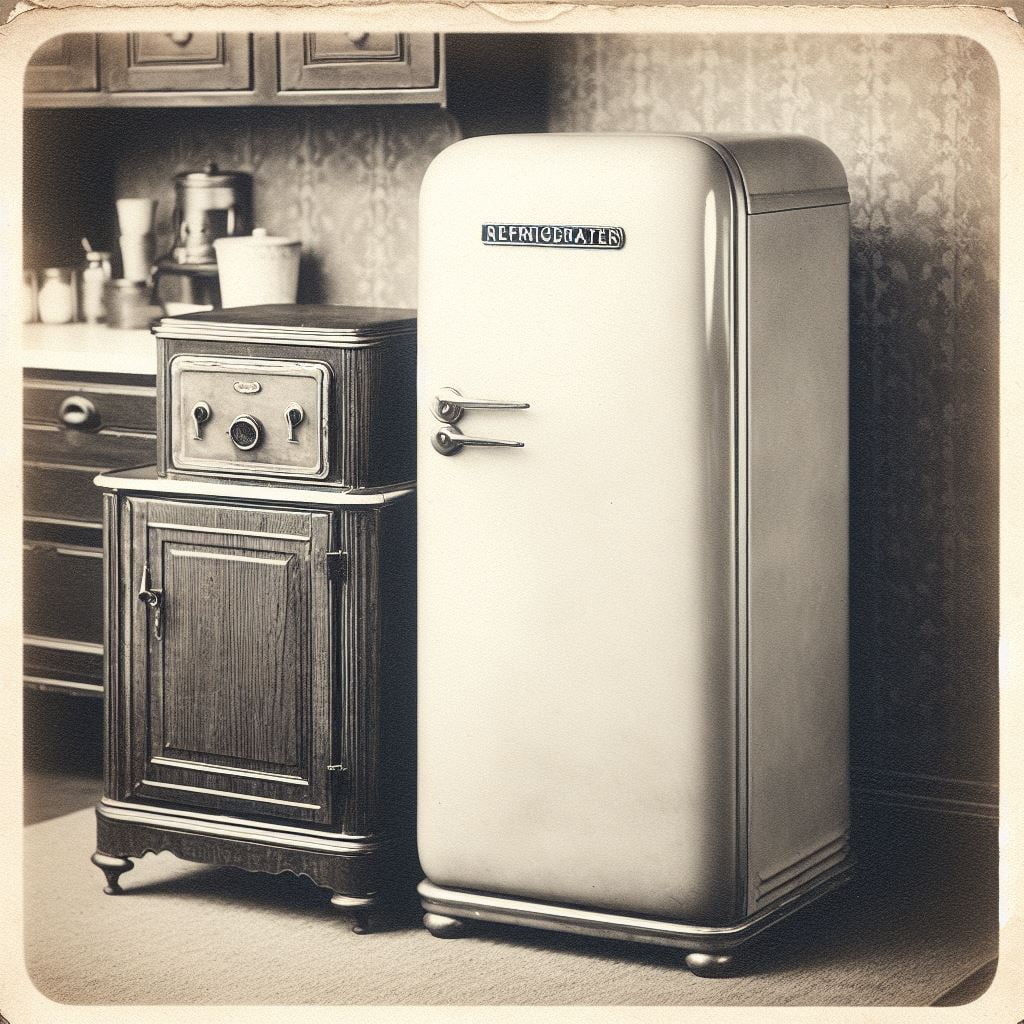
Historical References:
- The Wolf Company website chronicles its history, including the development of the domestic refrigerator.
- Refrigeration Technology- Britannica Encyclopedia
1923: Frigidaire and the Self-Contained Revolution:
- Company: Frigidaire, a brand under the General Motors umbrella, was established in 1918 specifically to produce domestic refrigerators.
- Innovation: Recognizing the limitations of the two-part design, Frigidaide introduced the first self-contained refrigerator in 1923. This revolutionary model integrated the compressor unit within the cabinet, creating a more compact, user-friendly, and aesthetically pleasing appliance.
Historical References:
- The Frigidaire website showcases its rich history, including the story behind the self-contained refrigerator: Frigidaire- Wikipedia. Additionally, the book “A Short History of Home Appliances” by Linda Edgerly mentions the significant impact of Frigidaire’s 1923 model.
1930s: The Freon Revolution and Stepping Up Efficiency:
- Innovation: Prior to the 1930s, refrigerators used toxic and flammable refrigerants like ammonia, sulfur dioxide, and methyl chloride. This posed a significant safety hazard. The introduction of Freon, a non-toxic and non-flammable refrigerant, marked a crucial turning point.
- Historical Context: The development of Freon (trademark for various chlorofluorocarbons) by Thomas Midgley Jr. and Albert Henne in the 1920s offered a safer and more efficient alternative. Its widespread adoption in the 1930s significantly boosted the popularity and safety of home refrigerators.
Historical References:
- While the environmental concerns surrounding Freon led to its eventual phase-out, its historical significance in revolutionizing refrigeration is documented in various sources, including “The History of Air Conditioning” by the American Society of Heating, Refrigerating, and Air-Conditioning Engineers (ASHRAE) and “The History of Refrigeration” by Richard T. Wright.
1940s: The Dawn of the Home Freezer:
- Historical Context: Prior to the 1940s, home refrigeration primarily focused on short-term food preservation. However, the growing popularity of frozen food, introduced commercially in the 1930s, created a demand for dedicated storage solutions.
- Innovation: The introduction of home freezers as separate compartments within refrigerators marked a significant shift. Early models were often small, often occupying the bottom section of the existing refrigerator cabinet. However, they offered a dedicated space for storing frozen foods for extended periods, revolutionizing home cooking and meal planning.
- Impact: The widespread adoption of home freezers significantly impacted food habits, allowing families to purchase and store various frozen fruits, vegetables, and pre-made meals, saving time and reducing reliance on fresh produce availability. Furthermore, it contributed to the growth of the frozen food industry, offering a convenient and reliable way to access diverse food options.
Historical References:
- “Historical Origine of Food preservation” by the National Center for home food Preservation
- “The History of Refrigerators” by Whirlpool
- “The 1940s Kitchen: Appliances and Innovations” by The Spruce Eats.
1950s – 1970s: The Era of Design and Efficiency:
- Historical Context: Following World War II, advancements in materials, technology, and consumer preferences fueled a design revolution in home appliances, including refrigerators.
- Innovations: This period saw a surge in sleeker and more aesthetically pleasing refrigerator designs, with rounded corners and integrated features like door handles. Additionally, significant strides were made in energy efficiency, with the introduction of insulation improvements and advancements in compressor technology. Moreover, features like automatic defrosting and adjustable temperature control offered greater convenience and user-friendliness.
- Impact: These advancements not only enhanced the aesthetic appeal of kitchens but also translated to reduced energy consumption and improved food preservation capabilities. The inclusion of user-friendly features further contributed to the widespread adoption and integration of refrigerators as essential household appliances.

Historical References:
- “The Appliance Timeline” by the Museum of the American Home.
- “The History of the Refrigerator” by Martha Stewart.
From the 1980s until today, the refrigerator has undergone a remarkable evolution fueled by a growing emphasis on sustainability, energy efficiency, and seamless integration with the digital world. Let’s delve into the pivotal innovations reshaping the modern kitchen:
Focus on Sustainability & Energy Efficiency:
- Environmental Concerns: The 1980s and 1990s saw a heightened awareness of environmental issues, particularly the depletion of the ozone layer by chlorofluorocarbons (CFCs) commonly used as refrigerants. This led to regulations and industry commitments to phase out CFCs.
Innovations:
- Inverter Compressors: Traditional compressors operate at a fixed speed, leading to energy wastage. Inverter compressors, on the other hand, adjust their speed based on cooling needs, significantly improving energy efficiency.
- Natural Refrigerants: Refrigerator manufacturers began shifting away from harmful CFCs toward natural refrigerants like hydrocarbons (e.g., isobutane) with minimal environmental impact.
- Real-Life Impact: Today’s refrigerators consume far less energy compared to older models. For example, a modern Energy Star-certified refrigerator uses about 75% less energy than those manufactured in the 1970s. This increased efficiency translates to lower electricity bills for consumers and a reduced carbon footprint for the planet.
References:
- “The Evolution of Refrigerator Efficiency” – Energy Star
- “Natural Refrigerants” – United States Environmental Protection Agency (EPA)
The Rise of the Smart Refrigerator:
- Wi-Fi Connectivity: Starting in the 2010s, refrigerators equipped with Wi-Fi connectivity emerged, allowing users to monitor and control their appliances remotely through smartphone apps. Features include temperature adjustments, notifications about open doors, and even the ability to view the inside of the fridge with internal cameras.
- Integrated Touchscreens: Some refrigerators boast large touchscreens that function as digital hubs for the kitchen. These displays offer everything from recipe suggestions and cooking timers to grocery list management and even entertainment features.
- Real-Life Impact: Smart refrigerators offer greater convenience and personalization. They help reduce food waste by reminding users of expiry dates or suggesting recipes based on existing ingredients. Moreover, remote monitoring capabilities allow users to ensure their food stays at the optimal temperature even when they’re away from home.
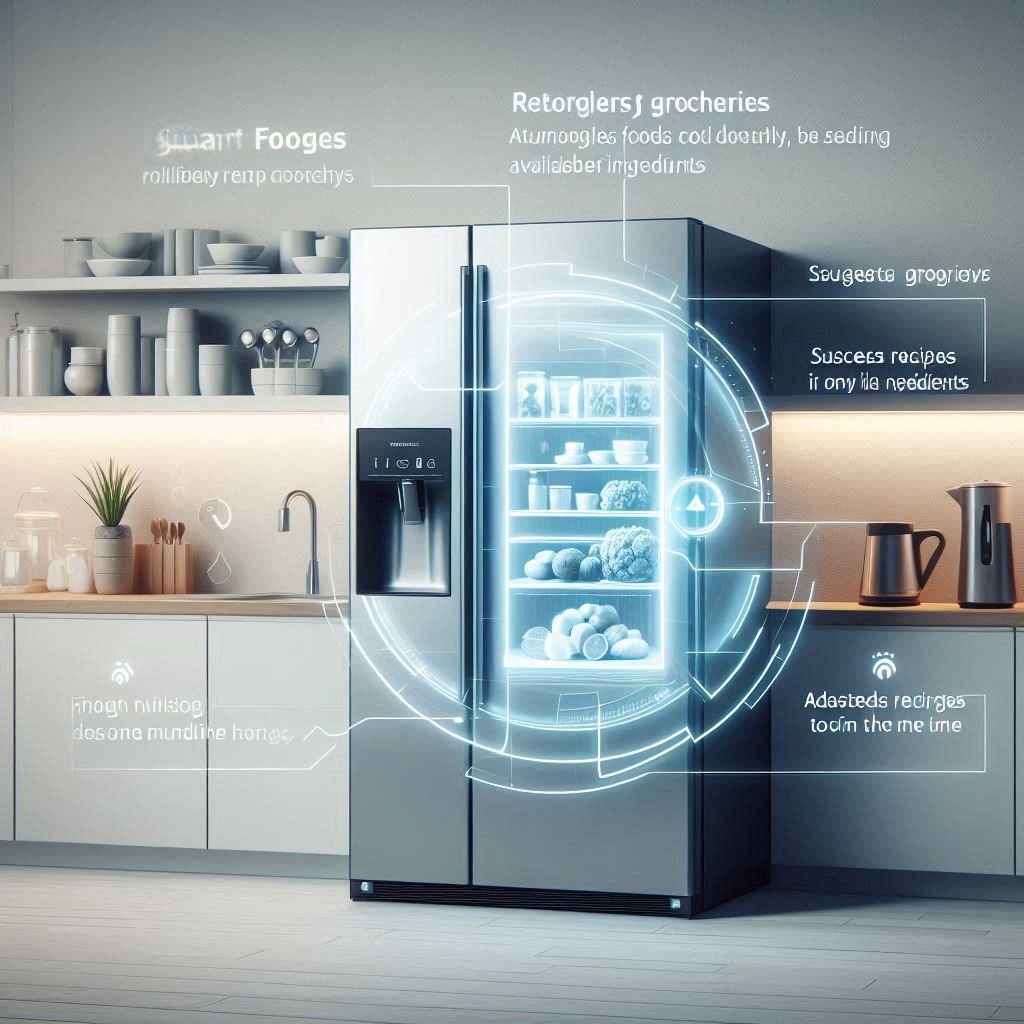
The Road Ahead:
The refrigerator’s evolution is far from over. Ongoing innovations in artificial intelligence, sensors, and materials science promise even greater convenience and sustainability. Future advancements could include refrigerators that automatically suggest recipes based on available ingredients, monitor food freshness with smart sensors, or optimize their operation to take advantage of off-peak electricity rates.
Impact of Refrigerator on Society
The refrigerator, an unassuming appliance found in nearly every modern kitchen, may seem commonplace. However, the humble refrigerator’s invention fundamentally altered the way we interact with food, shaped our communities, and influenced the very course of global development.
Reshaping Food and Health
- Preservation Triumph: Before refrigeration, food was a race against time. The refrigerator allowed perishables like meat, dairy, and produce to last significantly longer, reducing spoilage and food waste.
- Dietary Expansion: Access to previously unavailable or seasonal foods year-round led to a more diverse, and for many, more nutritious diet.
- Public Health: The ability to safely store food helped curb food-borne illnesses and reduce health risks associated with unpreserved or poorly preserved food.
Economic and Social Transformations
- The Rise of the Global Food Chain: Refrigerated transportation – trucks, trains, and ships – enabled food to travel vast distances. This revolutionized agriculture and global trade, creating a vast interconnected food system.
- Birth of the Supermarket: The centralized cold storage of supermarkets replaced smaller neighborhood grocers, leading to greater choice but also the potential for consolidation within the food industry.
- Shifting Family Dynamics: With readily available preserved foods, time spent on daily food preparation decreased. This played a role in the evolving structure of families and increasing participation of women in the workforce.

Environmental Considerations
- Mixed Legacy: While improving food access, the widespread use of harmful refrigerants in early devices contributed to environmental issues like ozone depletion. Modern innovations focus on environmentally sustainable refrigerants and energy efficiency.
- The Food Waste Paradox: The refrigerator, while reducing spoilage in some parts of the world, may indirectly encourage food waste in others. Overstocked fridges and extended expiry dates can lead to discarding still-edible food.
Beyond the Kitchen
The impact of refrigeration extends far beyond the food we eat:
- Medicine and Science: Refrigeration is crucial for storing vaccines, medicines, and research materials, advancing medical developments worldwide.
- Industry and Manufacturing: Numerous industrial processes rely on refrigeration and cooling systems, enabling innovation in a wide range of sectors.
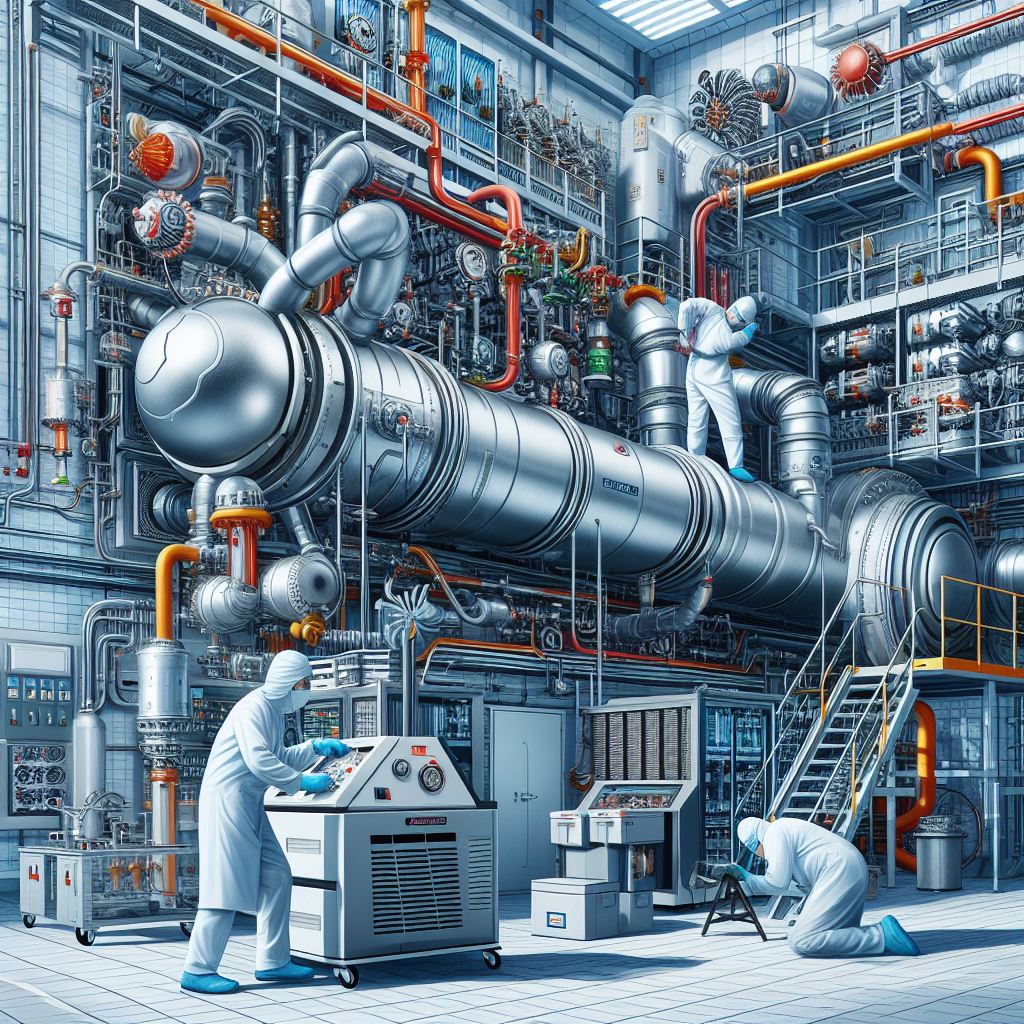
The Refrigerator’s Ongoing Evolution
The refrigerator hasn’t reached its final form. From smart fridges to hyper-efficient systems, innovations continue to shape how we interact with food and manage resources. As we address global challenges like food security and climate change, the refrigerator’s evolution will undoubtedly play a pivotal role.
Conclusion
The invention of refrigeration and air conditioning systems is a testament to human ingenuity and our ability to adapt to our environment. These innovations have not only improved our daily lives but have also shaped the way we live, work, and interact with the world. As we continue to face the challenges of a changing climate, these technologies will likely play an even more critical role in keeping us cool and comfortable in the future. So, the next time you enjoy a chilled beverage from your fridge or relax in the cool breeze of an air conditioner, take a moment to appreciate the remarkable history and science behind these cool inventions.
Also, Check relevant blogs:

